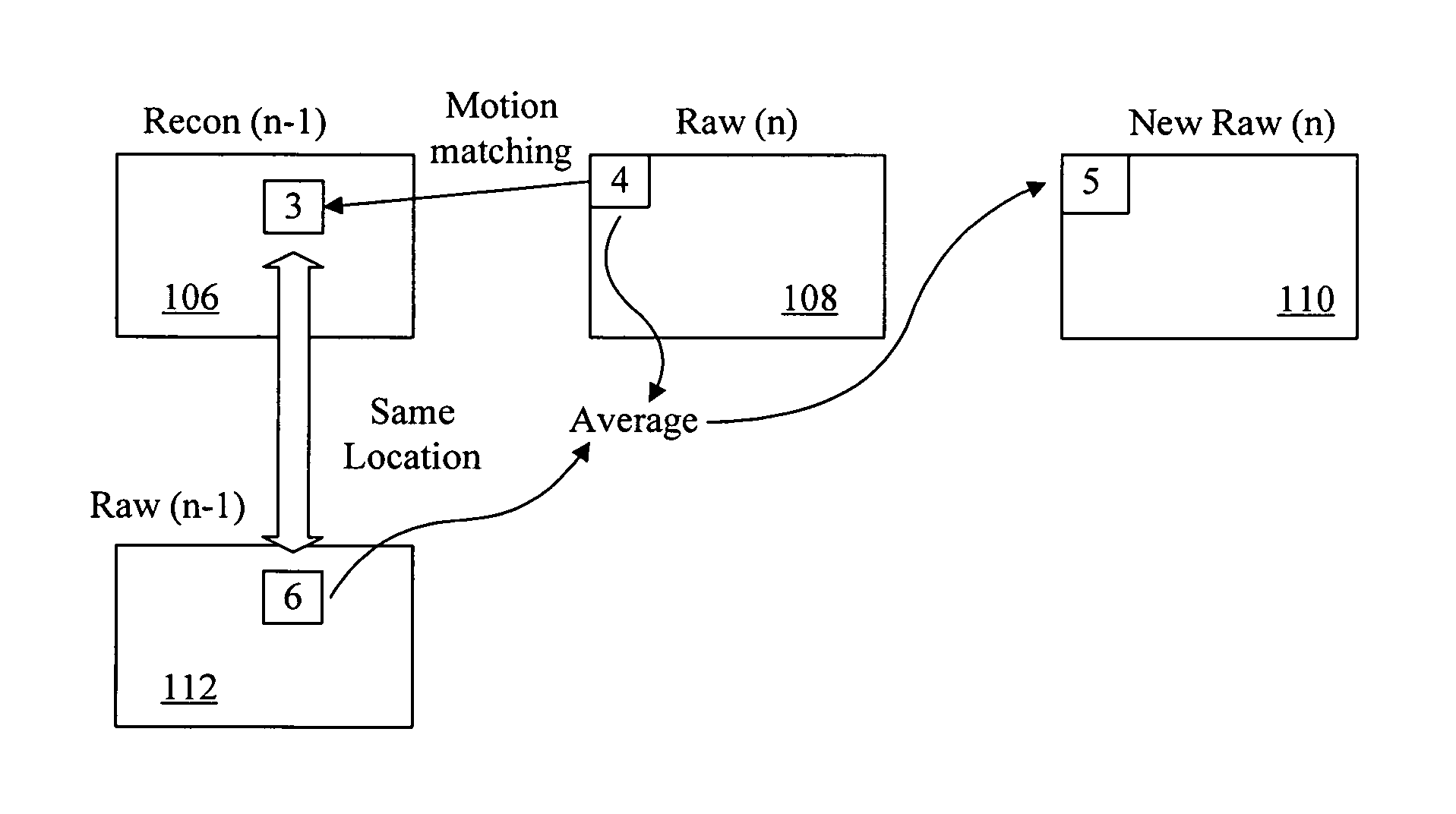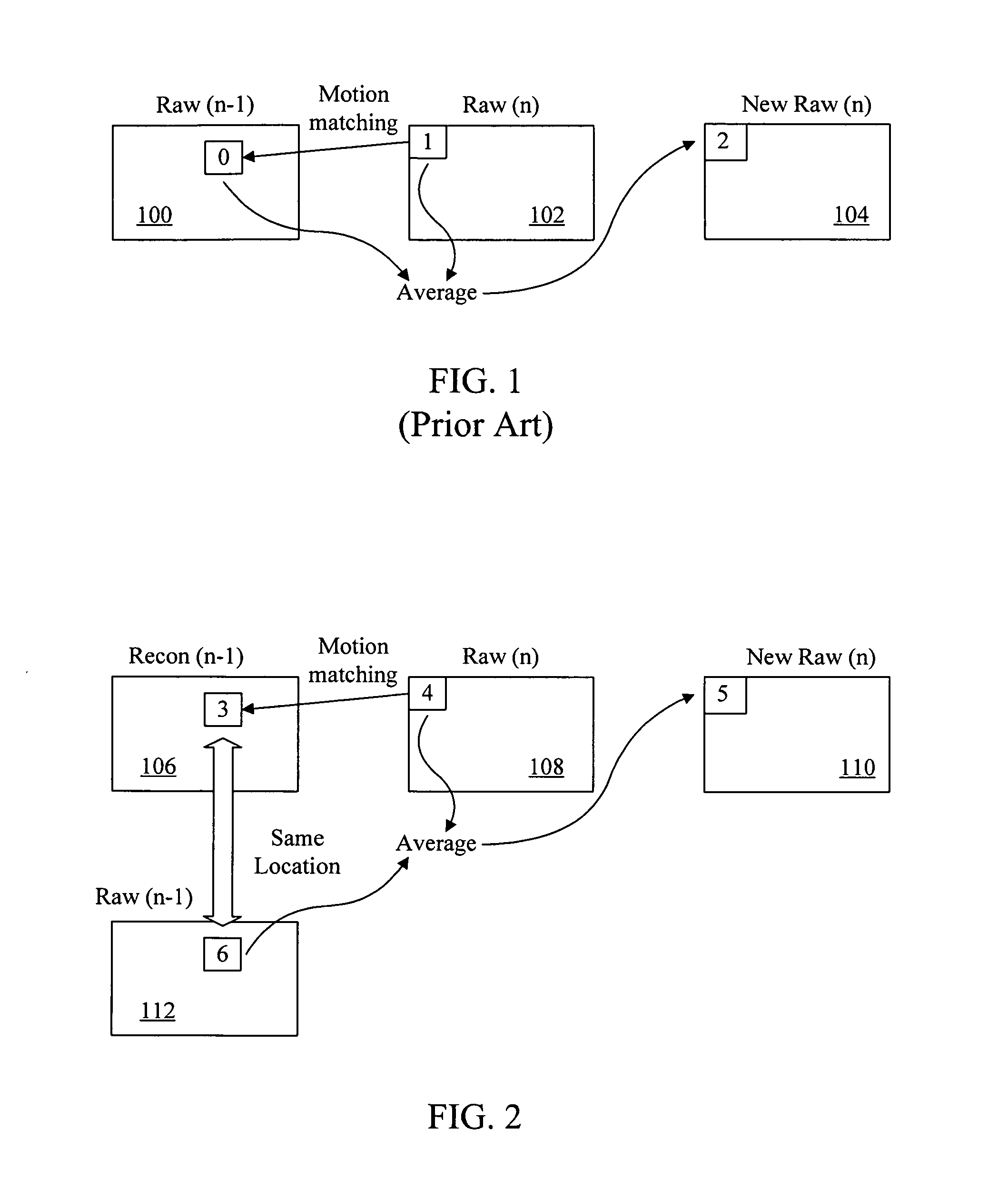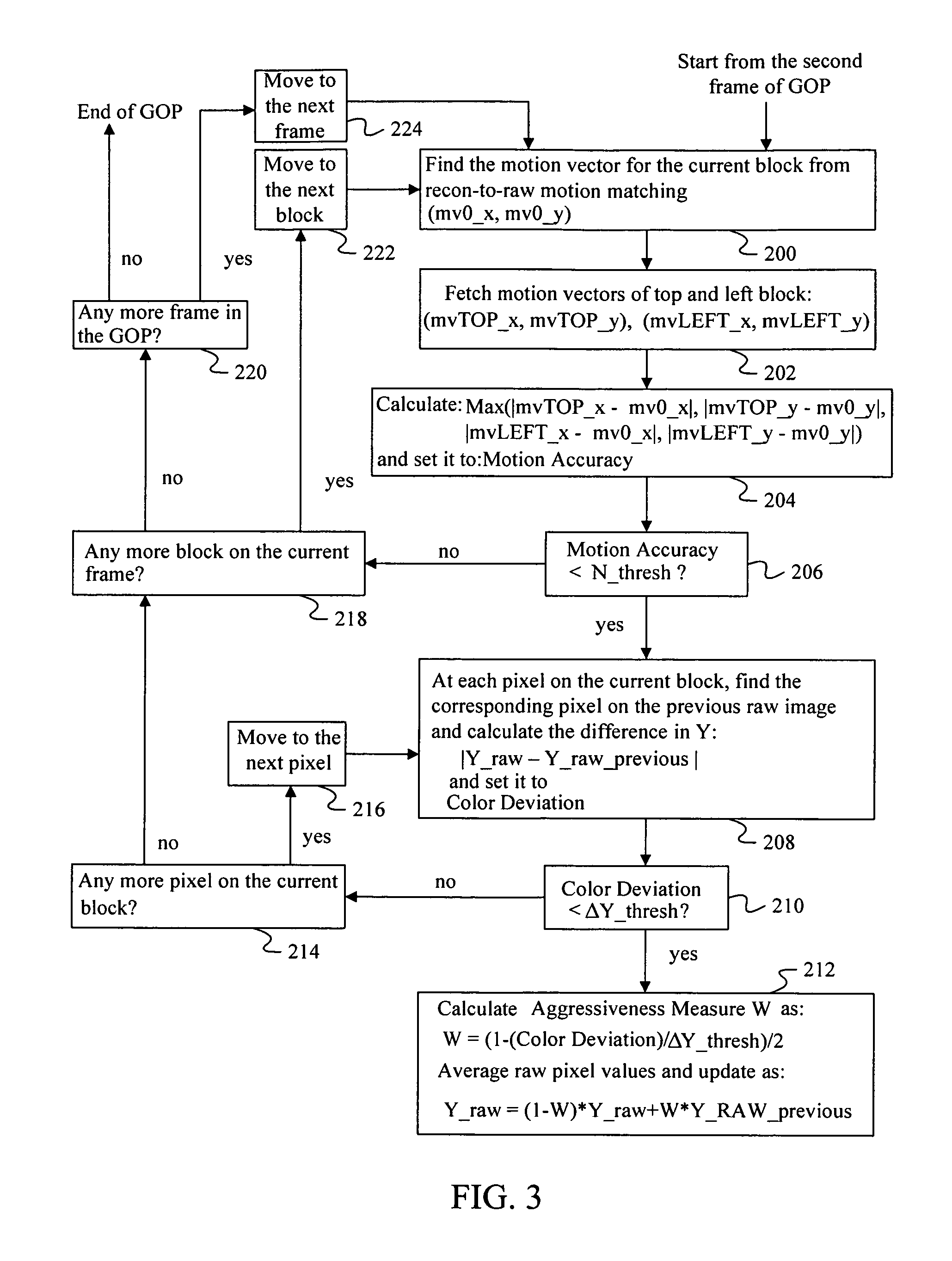Image flow knowledge assisted latency-free in-loop temporal filter
- Summary
- Abstract
- Description
- Claims
- Application Information
AI Technical Summary
Benefits of technology
Problems solved by technology
Method used
Image
Examples
Embodiment Construction
[0016]The presently preferred methods of the present invention provide methods that use motion vectors calculated from recon-to-raw motion matching for temporal smoothing. For the purpose of this application, “raw” is commonly referred to as images received from “input” to the engine, which performs temporal smoothing as well as encoding / trans-coding operation, and “recon” is commonly referred to as images received from “output” and has already undergone encoding / trans-coding process by the engine and has been reconstructed to be used as reference pictures for the purpose of inter-picture prediction as part of encoding / trans-coding process. This approach not only enables an implementation where improved latency and reduced frame buffer size are realized, but also leads to a scalable performance which is built into its underlying algorithm structure.
[0017]At very high bit rates, since recon images are closer to raw images, the preferred methods tend to behave like approaches based on...
PUM
 Login to View More
Login to View More Abstract
Description
Claims
Application Information
 Login to View More
Login to View More - R&D
- Intellectual Property
- Life Sciences
- Materials
- Tech Scout
- Unparalleled Data Quality
- Higher Quality Content
- 60% Fewer Hallucinations
Browse by: Latest US Patents, China's latest patents, Technical Efficacy Thesaurus, Application Domain, Technology Topic, Popular Technical Reports.
© 2025 PatSnap. All rights reserved.Legal|Privacy policy|Modern Slavery Act Transparency Statement|Sitemap|About US| Contact US: help@patsnap.com



